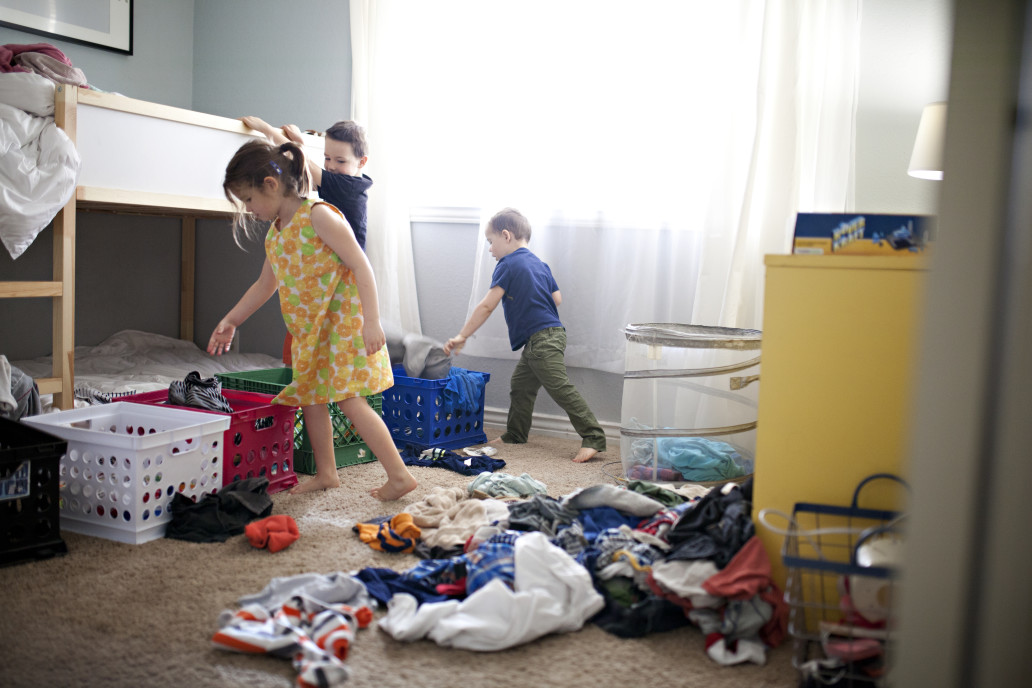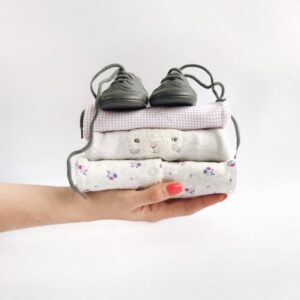Whether you’re a first-time parent or shopping for an expectant mom, selecting the appropriate baby clothing sizes can be a challenge. Let’s be honest, even with baby sizing charts to guide you, it can still be a guessing game from brand to brand. Shopping for baby clothing should be fun. So, let’s take a look at a few simple guidelines that will help make your baby and toddler clothing shopping run smoothly and save your sanity.
The Trouble with Baby Sizing Charts
As wonderful as it would be, babies do not come with personal baby sizing guides to help you navigate the task of shopping. What makes it even harder is the generalized baby sizing guidelines you find, stating 0-3 months or 6-12 months. If you’re new to this baby clothing game, you might be scratching your head right about now, and you aren’t alone.
Your six-month-old may not be nearly the length or weight of your six-month-old nephew. And then there’s European vs. US sizing, so how are you expected to purchase baby clothing with these sizes? We’re about to make this unsettling task a bit less confusing and help put the fun back into your shopping!
Baby Clothing Sizes
First, we need you to accept the fact that all brands will vary, all babies will be different, and baby sizing charts may or may not be provided for you when and where you need them. Congratulations! You’re halfway there. Here are a few general tips and guidelines to shopping for baby clothing to help get you in the ballpark of an outfit or onesie that fits.
Does 0-3 Months Include Newborns?
In simplest terms, no. When we break down newborn baby sizing, we generally mean babies weighing five to eight pounds and averaging twenty-one inches long. Baby clothing labeled 0-3 months typically fit little ones eight to thirteen pounds. You’ll find that most brands leave their baby sizing charts at that. So, what about length? Frustrating, we know. One of the best tips shared by moms is to search for that length measurement and rely on it more than age and weight. More often than not, you’ll be happier with the fit, and they can always grow into them. And just so you know, a 0–3-month onesie will generally fit a baby 21 to 24 in length.
Another top tip from moms and pediatricians on baby clothing – newborns grow like cute little weeds, so you may not want to splurge on too many newborn-sized outfits anyway. Besides, larger newborns may not even have a chance to wear them, so make it a habit to buy baby clothing a size or two larger in anticipation of light-speed growth.
As your baby grows, you’ll begin to have a better idea of:
- Your child’s height and weight percentiles
- Your preferred brands and how their baby sizing runs
- How to offer size recommendations to friends and family wanting to send baby clothing
Baby Sizing for Shoes
While most babies are happy being barefoot and free, we know baby shoes can be irresistible. If you’re dying to purchase a pair of shoes for your little one, sizing is much simpler than clothing.
Use the age as a guideline when needed. Your baby’s proper shoe size will come from measuring their foot length in inches. The most accurate measurements can be taken with their toes uncurled and “standing” on a surface outstretched as much as possible. Don’t forget to measure both feet so you can purchase according to the larger size needed.
Toddler Clothing Sizes
When your little one reaches toddler clothing, a new door to shopping opens up. While it’s easy to get carried away with the adorable toddler clothing, there are a few rules of thumb to help you navigate your sizing choices:
- If your toddler has been on the smaller side up until now, it’s likely their toddler clothing will run a bit big as well. The opposite applies for larger or taller toddlers, so select a size up.
- Toddler clothing will still pose the same variations in sizing from brand to brand, so select according to height rather than relying on age.
- Be mindful of a toddler’s burning desire to move and explore freely at home or Select clothing that is not confining and offers plenty of room to breathe.
- Choose toddler clothing styles and sizes that are easy for both of you to deal with once potty training begins. You’ll be glad you did!
24 Months vs. 2T
We’ve all seen the tags and had the same burning question: what’s the difference between 24-month and 2T toddler clothing? While most will pass it off as an interchangeable sizing label, there is a reasonable explanation that all comes down to style and wiggle room. 2T toddler clothing begins to take on a bit more of a sophisticated look, while 24-month outfits cater to little ones who still need the extra room in their clothing for diapers. They also tend to continue the onesie designs through 24-months, while 2T’s graduate to big boy and big girl separates.
The European Fit for Baby Clothes
If that wasn’t enough, we’re also going to throw European sizing into the mix. With e-commerce growing by leaps and bounds each year, it should be no surprise to shoppers that many brands use European toddler and baby sizing. The conversion from European to US sizing isn’t as concrete as you would like, but understanding the basics will help you select the proper baby and toddler clothing sizes.
European sizes for children follow the general age-based system. Yet, rather than being weight-focused, European sizing is more height-focused. You’ll notice a US size will seem smaller than a European’s sizing recommendation. There’s the little issue of centimeters vs. inches, too. When in doubt, refer to the brand’s sizing guideline and cross-check it with a sizing conversion chart that offers measurement guidelines for chest and waist for more accuracy.
Now that you’re armed with the knowledge to take on shopping for the little ones in your life, it’s time to fill those carts!


